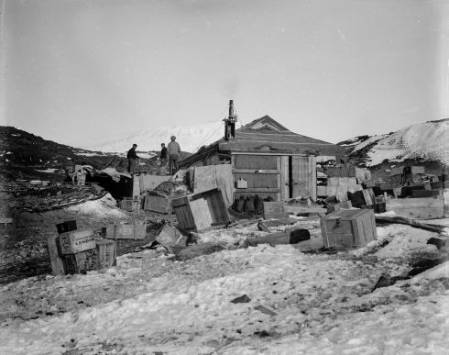Author: Paula
Date: 15 November 2011
The Antarctic Heritage Trust conservators have recently moved from the confines of their conservation lab at Scott Base, to their Antarctic field camp at Cape Royds.
John bid farewell to winter conservator Sarah and welcomed the incoming team of conservation carpenters who work over the summer months on the buildings left behind by the heroic-era explorers.
The team is currently working at Ernest Shackleton’s British Antarctic (Nimrod) expedition 1907-1909 at Cape Royds. Communication is patchy when the team is out in the field. Although there is a satellite (sat) phone, the team relies on visitors who do literally ‘just drop in’ by helicopter with supplies and mail and who in turn relay information (including blogs) to Scott Base and New Zealand.
Ernest Shackleton's base at Cape Royds. Credit: G Rowe
The conservation team are completing a few tasks at Cape Royds, including relocating the Arrol Johnston wheel and Mawson’s Dredge which were conserved over winter 2011, before they move on to their main work programme this summer season conserving Captain Scott’s British Antarctic Terra Nova Expedition 1910- 1913 base at Cape Evans.
Each summer the team returns the artefacts that have been conserved during winter at the conservation laboratory at Scott Base back to the historic bases before packing up another 1,000 or so objects destined for conservation over the following winter. This continuous cycle of removal-conservation-return has led to over 5,400 artefacts from Cape Evans alone being conserved.




